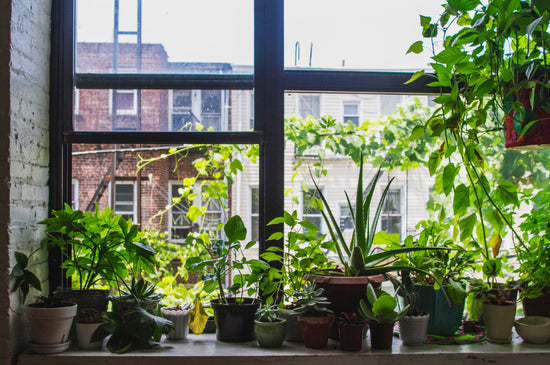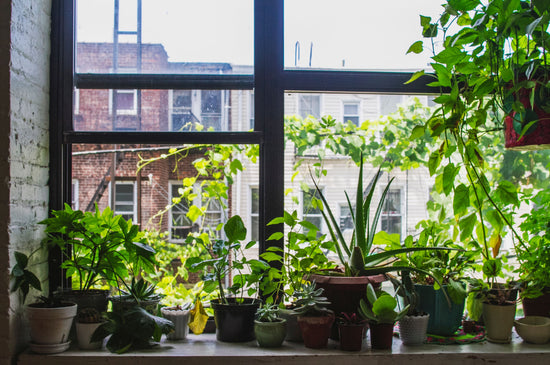The Ultimate Guide to Thriving Houseplants
Caring for houseplants can seem daunting, but with the right guidance, any space can become a thriving green oasis. From watering schedules to lighting needs, every detail matters when it comes to keeping your indoor plants healthy. This guide provides detailed care instructions tailored to help a variety of plants thrive in your home. For a wide selection of lush indoor houseplants, visit Wekiva Foliage.
How to Care for Thriving Houseplants
1. Light Requirements
Understanding your plant’s light needs is crucial to its growth.
- Bright, Indirect Light: Ideal for plants like pothos epipremnum and philodendron, bright but indirect sunlight prevents scorching. Place them near east-facing windows or filtered south-facing light.
- Low Light: Plants such as the zanzibar gem plant or snake plant can thrive in dim spaces, making them perfect for offices or rooms with minimal sunlight.
- Direct Sunlight: Some succulents and cacti love direct sun. Ensure windows provide at least 4-6 hours of unfiltered light.
Tip: Rotate plants weekly to promote even growth and prevent them from leaning toward the light.
2. Watering Guidelines
Watering varies significantly depending on the plant’s type and environment.
- Check Soil Moisture: For most plants, let the top inch of soil dry out before watering.
- Avoid Overwatering: Overwatering is the leading cause of plant issues. Use pots with drainage holes and water sparingly.
- Humidity Boosters: Tropical plants like peace lilies and christmas cacti thrive in humid conditions. Use a pebble tray or mist their leaves occasionally.
Tip: Plants like the spider plant chlorophytum comosum may need more frequent watering in warmer months.
3. Soil and Repotting
Using the right soil mix ensures proper drainage and nutrient availability.
- Well-Draining Soil: Essential for plants like philodendrons and spider plants, a mix of potting soil, perlite, and peat moss works well.
- Repotting Schedule: Most plants need repotting every 1-2 years. Signs include roots growing out of the pot or slow growth.
- Size Matters: Choose a pot that’s 1-2 inches larger in diameter than the current one. For stylish options, explore Wekiva Foliage’s indoor planters.
Tip: Always water plants after repotting to help them settle into their new soil.
4. Fertilization
Regular fertilization ensures vibrant growth and healthy blooms.
- Frequency: Apply a balanced fertilizer every 4-6 weeks during the growing season (spring and summer).
- Specialized Needs: Flowering plants like peace lilies may benefit from a bloom booster.
Tip: Avoid fertilizing in winter when most plants are dormant.
5. Pruning and Maintenance
Pruning promotes new growth and keeps plants looking tidy.
- Trim Dead Leaves: Remove yellow or brown leaves promptly to redirect energy to healthy parts.
- Shape the Plant: Use sharp, sterilized scissors to maintain a neat appearance.
Tip: Plants like pothos can be pruned to encourage bushier growth.
6. Pest and Disease Management
Indoor plants are prone to pests like spider mites and mealybugs.
- Preventive Measures: Inspect plants regularly and quarantine new additions.
- Natural Remedies: Use neem oil or insecticidal soap for infestations.
- Fungal Issues: Overwatering can lead to root rot or mold. Ensure proper airflow and avoid waterlogged soil.
Tip: Wipe down leaves with a damp cloth to remove dust and improve photosynthesis.
Troubleshooting Common Houseplant Issues
Yellowing Leaves
- Cause: Overwatering or poor drainage.
- Solution: Let the soil dry out and ensure pots have proper drainage.
Wilting or Drooping
- Cause: Underwatering or root damage.
- Solution: Water thoroughly and check roots for signs of overcrowding or rot.
Brown Leaf Tips
- Cause: Low humidity or overfertilization.
- Solution: Increase humidity with misting and reduce fertilizer application.
Lack of Growth
- Cause: Insufficient light or nutrients.
- Solution: Move the plant to brighter light and consider fertilizing.
FAQ
1. How often should I water my houseplants?
Most houseplants need water when the top inch of soil is dry. Tropical plants may require more frequent watering, especially in dry climates.
2. What is the best light for indoor plants?
Bright, indirect light suits most plants. Low-light varieties like the ZZ plant thrive in dim areas, while succulents prefer direct sunlight.
3. How do I increase humidity for tropical plants?
Use a pebble tray, humidifier, or mist the leaves regularly to boost moisture levels.
4. When should I repot my houseplants?
Repot every 1-2 years or when roots outgrow the pot. Repotting ensures better growth and access to fresh nutrients.
5. What soil is best for houseplants?
A well-draining mix of potting soil, perlite, and peat moss works for most plants. Some plants, like cacti, require specialized soil blends.
Explore Wekiva Foliage’s Houseplant Collection for plants and accessories that make indoor gardening effortless! With the right care, your houseplants will thrive and transform your home into a lush green haven.





